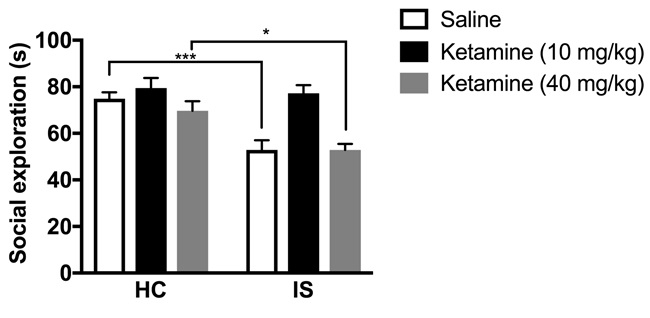Ketamine Works for Female Rats, Too
A first of its kind study in female rats finds that a single, low dose of ketamine promotes resilience to future adverse events as it does in male rats. Published in eNeuro, the research addresses a critical gap in understanding and developing treatments for stress-related disorders, which disproportionately afflict females.

Ketamine has been used for decades as an anesthetic and recreational drug. However, ketamine given at a low-dose is currently being investigated for its rapid antidepressant effects that could benefit treatment-resistant patients. Although results from animal research are promising, most of these studies have used only males.
Dr. Samuel Dolzani and colleagues at the University of Colorado Boulder found that female rats treated with low-dose ketamine one week prior to tail shock stress prevented the typical stress-induced decrease in social exploration, reflecting reduced anxiety-like behavior. Strikingly, low-dose ketamine female rats exhibited social exploration levels similar to those of control female rats that did not experience tail shock stress. In collaboration with Dr. Yingxi Lin at the Massachusetts Institute of Technology, the researchers used a novel tagging system to show that neurons in the prefrontal cortex that were activated by low-dose ketamine were also turned on during the later stress experience. They went on to show that a neural circuit involving the prelimbic cortex and dorsal raphe nucleus was responsible for ketamine's resilience-promoting effects.
Article: Inhibition of a descending prefrontal circuit prevents ketamine-induced stress resilience in females
Corresponding author: Samuel Dolzani (University of Colorado Boulder, USA), sam.dolzani@colorado.edu




















